IEEEVR 2017 Highlight
05 Apr 2017

The IEEE Virtual Reality 2017 conference was held in Los Angeles from March 18th to 22nd. I was lucky to attend the exciting conference. Our team from Johns Hopkins University have three poster presentations. Here in this post, I would love to share some highlights and interesting projects that I saw during the conference.
Virtual Reality is such a popular terminology these years, with more and more revolutionary products, cool demos, and potential application domains. IEEEVR is undoubtedly the top conference in this technology domain. The papers, posters and demos at IEEEVR represent the most recent breakthroughs in the research of VR. Some of them are selected and briefly described in this post. You can definitely refer to the full proceedings of IEEEVR 2017 when they are available.
HMD v.s. CAVE
SEARIS (Software Engineering and Architectures for Realtime Interactive Systems) is one of the workshops held at IEEEVR on Sunday. A panel “Big metal VR in the HMD and Unity era” attracted the attention of many researchers, including me. The big metal VR here means CAVE.
A cave automatic virtual environment (better known by the recursive acronym CAVE) is an immersive virtual reality environment where projectors are directed to between three and six of the walls of a room-sized cube.
CAVE was one of the major representatives of Virtual Reality technology for a long time. However, as indicated in the name of the panel, VR entered the “HMD and Unity era”, pretty much since the appearance of good HMDs, for example, Oculus. VR and AR work based on projectors are becoming rare. Apparently, CAVE technology is experiencing a hard time. Researchers attending this panel had very heated discussion about the current situation and future of CAVE.
Several years ago, head-mounted display was not as mature as today. People thought HMDs were too bulky, expensive, and ergonomically uncomfortable for VR experiences. CAVE was absolutely the choice for VR applications. It has been widely used in applications like military training. However, engineers tackled the problems quickly, and HMDs bring VR out of the labs, to the general consumer market. HMDs are cheap, easily accessible, and powerful. On the other hand, CAVE is still difficult to setup. Careful calibration is involved to guarantee comfortable experience for the users. More spaces are needed. It is much more expensive, compared to HMDs.
Still, CAVE has its unique advantage over HMDs. It provides natural environment for shared VR experience. A well-calibrated CAVE provides better immersive feelings. If you have tried some Disneyland attractions, for example, Soaring Over the Horizon, you will know that CAVE is still great.
Just like very few people could predit the current popularity of HMDs several years ago, advancement in CAVE technology is able to bring people’s faith back.
Interesting Papers
- Efficient Hybrid Image Warping for High Frame-Rate Stereoscopic Rendering @Paper
- Paint with Me: Stimulating Creativity and Empathy While Painting with a Painter in Virtual Reality @Paper @Page
- Recognition and Mapping of Facial Expressions to Avatar by Embedded Photo Reflective Sensors in Head Mounted Display
- Wide Field Of View Varifocal Near-Eye Display Using See-Through Deformable Membrane Mirrors @Paper @Page
- Best Paper Award
(This selection is based on my personal interest.)
Interesting Posters
- Monocular Focus Estimation Method for a Freely-Orienting Eye using Purkinje-Sanson Images
- The AR-Rift 2 Prototype @Page
- Estimating the Motion-to-Photon Latency in Head Mounted Displays
- Hand Gesture Controls for Image Categorization in Immersive Virtual Environments
- Resolution-Defined Projections for Virtual Reality Video Compression
- A Methodology for Optimized Generation of Virtual Environments Based on Hydroelectric Power Plants
- Robust Optical See-Through Head-Mounted Display Calibration: Taking Anisotropic Nature of User Interaction Errors into Account
- Our poseter wons the Honorable Mention for Best Poster
Interesting Research Demos
- Diminished Hand: A Diminished Reality-Based Work Area Visualization @Video
- 3DPS: An Auto-calibrated Three-Dimensional Perspective-Corrected Spherical Display @Video
- mpCubee: Towards a Mobile Perspective Cubic Display using Mobile Phones
- Towards Ad Hoc Mobile Multi-display Environments on Commodity Mobile Devices @Video
IEEEVR is full of fun and innovative ideas. It is also very good to see more and more Chinese researchers and engineers in this field.
Thanks for reading! 